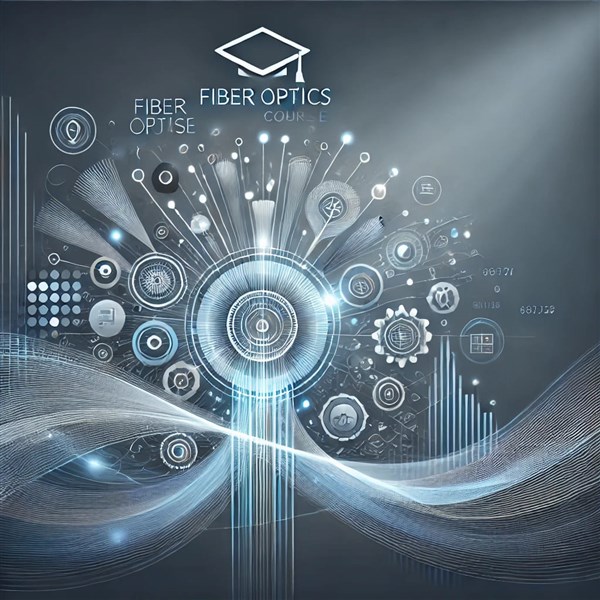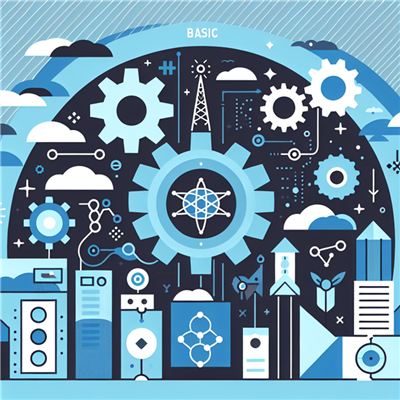
In an era of rapid technological advancements and increasing demand for high-speed, reliable connectivity, fiber optics has emerged as the backbone of modern telecommunications. As businesses, governments, and consumers rely heavily on uninterrupted data transmission, professionals skilled in fiber optics are in high demand.
A fiber optics course equips networking professionals with the expertise needed to design, install, and maintain these advanced networks. In this blog, we delve into the growing importance of fiber optics, the advantages of pursuing specialized training, and how it prepares professionals for the challenges of modern networking.
The Growing Importance of Fiber Optics in Networking
Fiber optics technology uses light to transmit data at incredible speeds and with minimal loss. This makes it an indispensable component of modern communication systems, including the internet, telecommunications, and data centers.
1. Backbone of High-Speed Internet
Fiber optic networks are essential for delivering high-speed internet, enabling activities like streaming, gaming, and video conferencing. Unlike traditional copper cables, fiber optics offer significantly higher bandwidth, allowing the simultaneous transmission of vast amounts of data.
2. Supporting 5G and IoT
The rollout of 5G networks and the proliferation of IoT devices require robust and efficient communication systems. Fiber optics provides the infrastructure needed to handle the immense data traffic generated by these technologies.
3. Data Centers and Cloud Computing
Modern data centers rely on fiber optics for their speed and reliability. As cloud computing becomes mainstream, the demand for efficient data transfer continues to rise, further emphasizing the importance of fiber optics.
Why Fiber Optics Training is Crucial for Networking Professionals
With fiber optics becoming the standard for modern networking, professionals must develop the skills required to handle these advanced systems. Here's why training in fiber optics is essential:
1. Specialized Knowledge and Skills
A fiber optics course provides in-depth knowledge of how optical systems work, including key topics like:
- Fiber optic cable types and their applications.
- Splicing and connectorization techniques.
- Network design and installation practices.
- Testing and troubleshooting methods, including OTDR (Optical Time Domain Reflectometry).
2. Industry Certifications
Certifications like the Certified Fiber Optic Technician (CFOT) or Fiber Optic Installer (FOI) demonstrate a professional's expertise. Many courses prepare participants for these certifications, enhancing their employability.
3. Hands-On Experience
Practical training is a core component of fiber optics courses, allowing students to:
- Use specialized tools for splicing and testing.
- Work with real-world scenarios to build and troubleshoot networks.
4. Staying Competitive
With rapid advancements in networking technologies, professionals who lack fiber optics expertise risk falling behind. Training ensures that they remain relevant in an evolving industry.
Advantages of Fiber Optics for Modern Networking
1. Speed and Bandwidth
Fiber optics delivers data at speeds up to 100 Gbps and beyond, far surpassing copper-based systems. It also supports higher bandwidths, making it ideal for high-demand applications.
2. Reliability and Durability
Fiber optic cables are less susceptible to interference and signal loss, ensuring reliable performance even over long distances.
3. Scalability
As businesses grow, fiber optic networks can be easily scaled to meet increasing data demands.
4. Energy Efficiency
Fiber optics consumes less power than traditional systems, contributing to eco-friendly networking solutions.
Key Topics Covered in a Fiber Optics Course
-
Introduction to Fiber Optics Technology
- Understanding the basics of light transmission and optical fibers.
- Types of fibers: Single-mode and multi-mode.
- Installation and Maintenance
- Splicing techniques (fusion and mechanical).
- Cable installation practices for indoor and outdoor environments.
- Using OTDR and power meters for performance testing.
- Identifying and resolving common issues like signal attenuation and cable damage.
- Fiber optics in data centers, telecommunications, and industrial settings.
- Emerging technologies like FTTx (Fiber to the X) and DWDM (Dense Wavelength Division Multiplexing).
- Testing and Troubleshooting
- Advanced Applications
Career Opportunities After Completing a Fiber Optics Course
1. Fiber Optic Technician
Install and maintain fiber optic networks for telecommunications companies and ISPs.
2. Network Engineer
Design and implement fiber-based communication systems for businesses and organizations.
3. Data Center Specialist
Manage fiber optic cabling and infrastructure within data centers.
4. Project Manager
Oversee large-scale fiber optic deployment projects, ensuring timely and efficient completion.
5. Telecommunications Consultant
Advise businesses on upgrading to fiber optic systems and optimizing their networks.
Choosing the Right Fiber Optics Course
When selecting a course, consider the following factors:
-
Accreditation and Certification
Ensure the course is accredited and provides certification opportunities like CFOT or FOI. -
Practical Training
Look for programs that emphasize hands-on experience and real-world applications. -
Experienced Instructors
Choose a course taught by industry professionals with extensive experience in fiber optics. -
Flexibility and Accessibility
Opt for courses that fit your schedule, whether online or in-person. -
Industry Relevance
Ensure the curriculum aligns with current and emerging trends in fiber optics technology.
The Future of Fiber Optics in Networking
Fiber optics will continue to play a critical role in shaping the future of networking. Key trends include:
- 5G Expansion: Fiber optics will underpin the high-speed connectivity required for 5G networks.
- Increased IoT Adoption: Reliable fiber optic infrastructure will support the growing number of connected devices.
- Advancements in Quantum Communication: Fiber optics will enable secure, high-speed data transfer for quantum networks.
Conclusion
Fiber optics is no longer a niche technology; it is a cornerstone of modern networking. For professionals in telecommunications and IT, a fiber optics course is not just an option but a necessity. It provides the skills and certifications needed to excel in a competitive and rapidly evolving industry.
By investing in fiber optics training, professionals can stay ahead of the curve, contribute to cutting-edge technologies, and build a rewarding career in networking.
With the growing importance of fiber optics technology, it is crucial for networking professionals to gain a comprehensive understanding of this field. This is where Koenig Solutions, a leading IT training company, comes into play.
Koenig Solutions offers a comprehensive Fiber Optics Course designed to provide networking professionals with the essential skills and knowledge they need to stay ahead in their field.







COMMENT